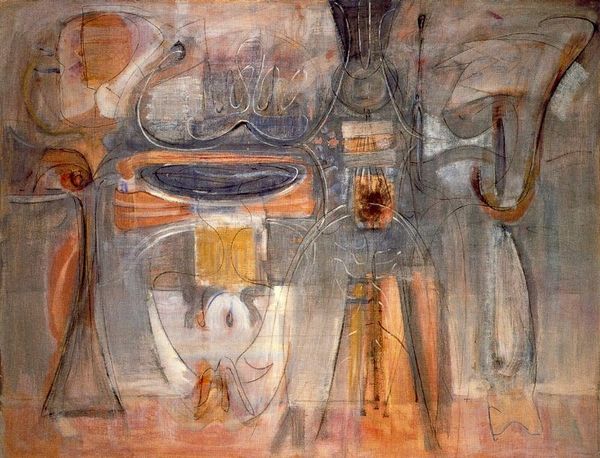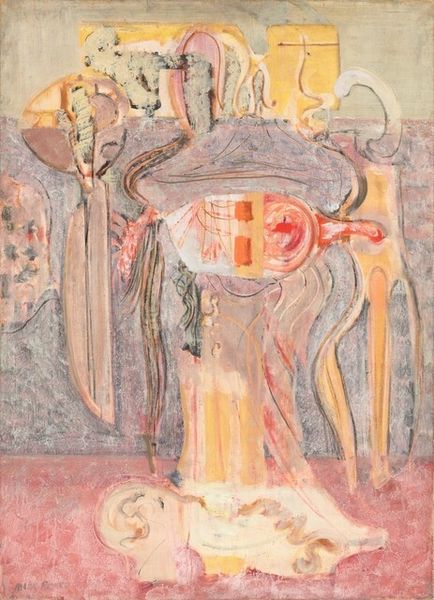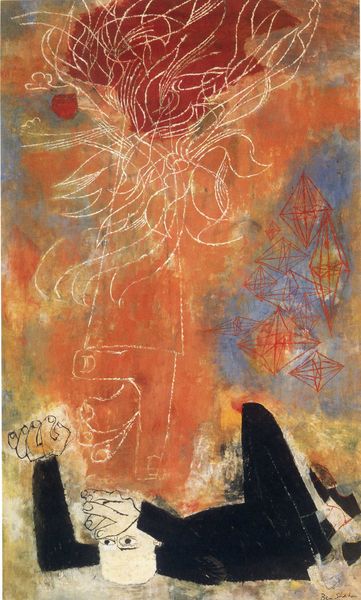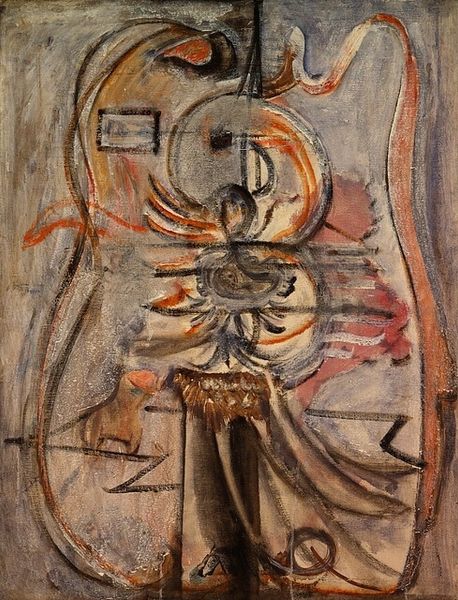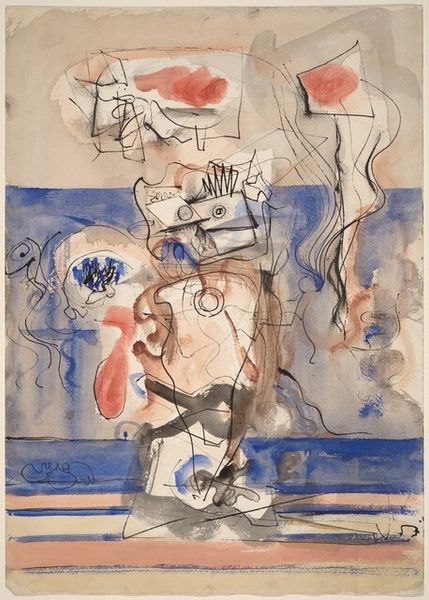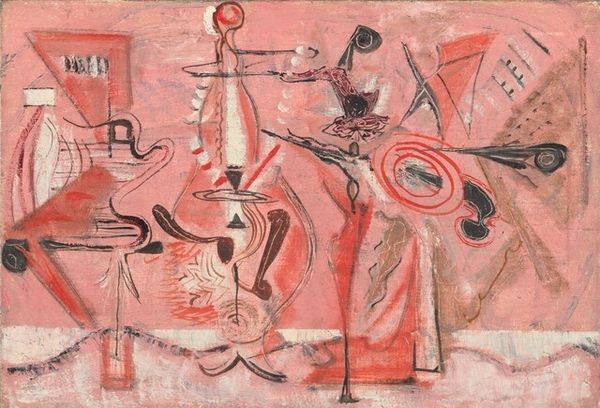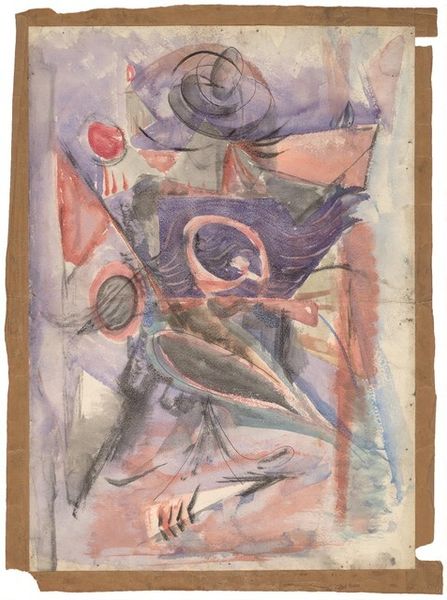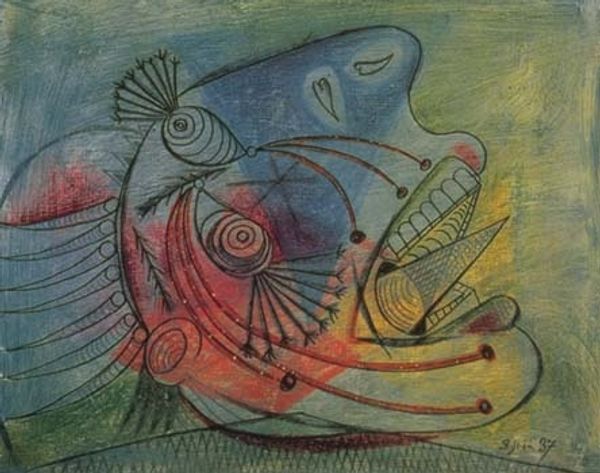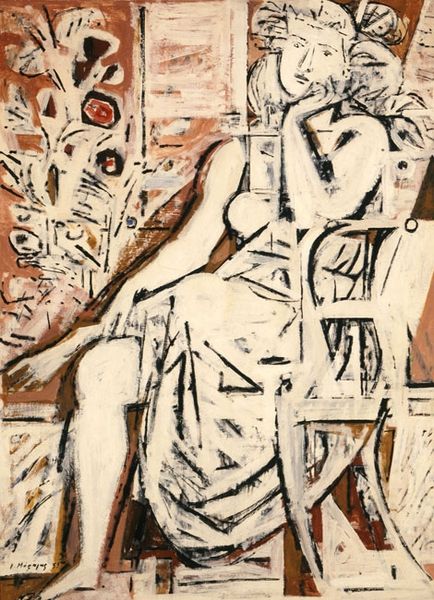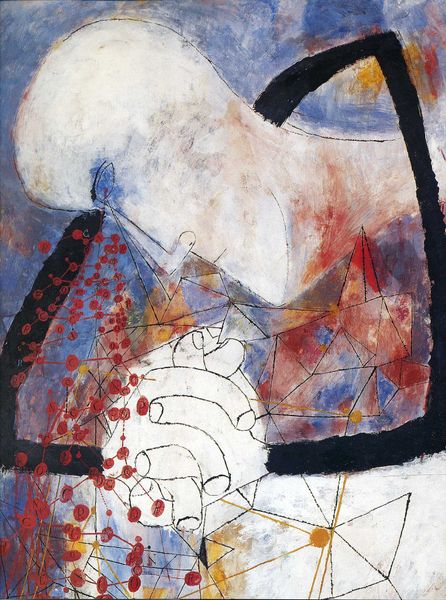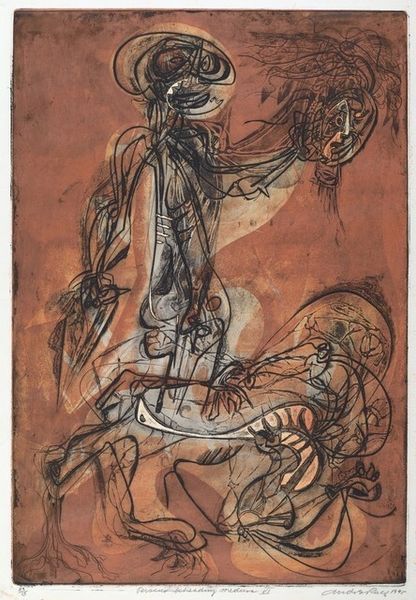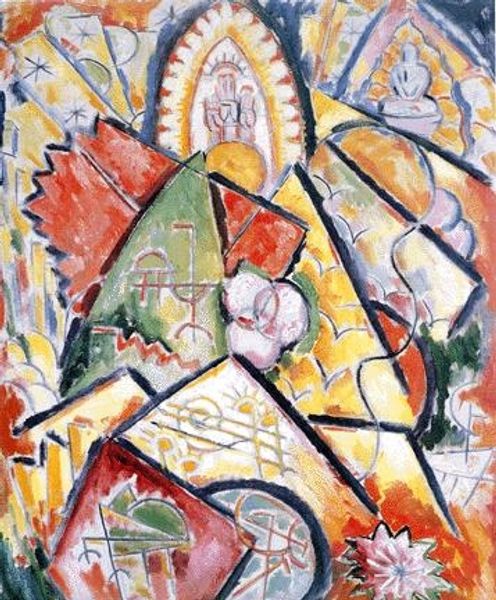
painting, oil-paint, impasto
#
abstract-expressionism
#
abstract painting
#
painting
#
oil-paint
#
form
#
impasto
#
abstraction
#
line
#
modernism
Dimensions: overall: 71 x 98 cm (27 15/16 x 38 9/16 in.) framed: 80.2 x 108.4 x 8.6 cm (31 9/16 x 42 11/16 x 3 3/8 in.)
Copyright: National Gallery of Art: CC0 1.0
Curator: Before us hangs Mark Rothko’s "Memory," painted in 1946, executed with oil on canvas. It’s considered an example of Abstract Expressionism. What impressions arise as you gaze upon it? Editor: It feels ancient, like unearthed fragments of a forgotten ritual or script. The color palette evokes a kind of faded intensity, while the layering builds a depth that implies immense time. There’s a sense of melancholy and a subtle yearning, too. Curator: Indeed, Rothko here channels an enduring interest in mythic symbols and archaic forms. It's an earlier work where surrealist influences are still present before his iconic color field paintings. Notice how totemic figures are suggested, echoing primal memories. The superimposed linear elements can also be viewed as vessels. Editor: Absolutely, it's before he eliminated figures from his work altogether, stripping everything down to color and form. But even here, you can feel the stirrings of a movement towards pure abstraction. These fragmented forms, are like echoes of a societal consciousness struggling to reconstruct itself. 1946; it was just after the end of the war. The world felt fragile, searching. Curator: I see it as Rothko wrestling with archetypes, with cultural memory trying to surface in response to the world shattered after WWII. There's an almost palpable struggle visible in the heavy impasto and the obscured forms. Editor: That palpable struggle really reflects what so many must have felt in that era, an uneasy relationship to history itself, wanting to learn, remember and understand but burdened by its trauma. The broken forms could be symbols of the way people rebuilt from the fragments, like shattered mirror images trying to reconstruct something whole, even if changed, scarred or wounded. Curator: Perhaps a palimpsest, the mind’s attempt to recover half-seen meanings. The imagery doesn't settle into any easy narrative, which contributes to the feeling that Rothko is after something beyond a personal memory. Rather a collective or even inherited cultural memory. Editor: Precisely, and the title then works on multiple levels; both individual and communal. Thinking about how art reflects a particular cultural moment allows a painting like this to spark dialogue in ways that address shared challenges of reconstruction, identity, and meaning. Thank you, the layers are something to keep mulling over! Curator: An enigmatic and evocative early work. Viewing Rothko through this sociohistorical lens certainly brings new insights and expands understanding of abstraction's appeal during such volatile, uncertain times.
Comments
No comments
Be the first to comment and join the conversation on the ultimate creative platform.
